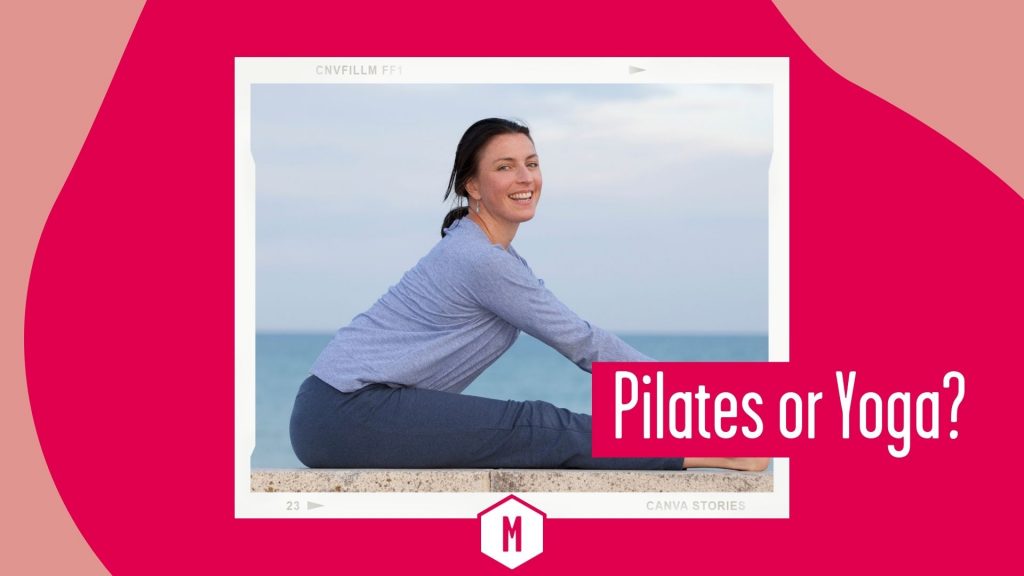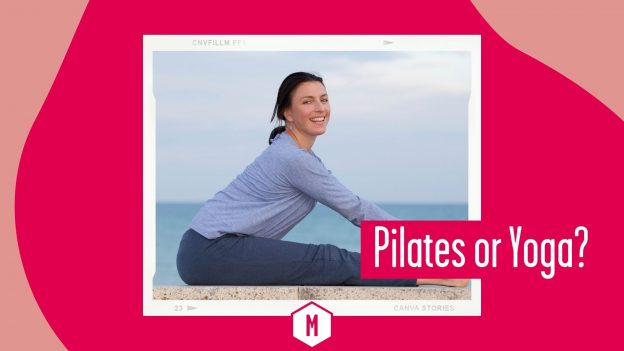
MFML teacher Sally Parkes explores why Pilates is perfect for yogis. Sally gets into the similarities and differences and how pilates for yogis is a great way to get stronger.
As a teacher of both yoga and the Pilates Method, l am often asked whether I recommend Pilates for yogis. There is no simple or easy answer to this. It depends on what you want to gain from your practice of course. I have discovered that they each compliment the other. Regular Pilates classes have helped enormously with yoga. Pilates has helped me to improve posture and core strength. It’s also helped me recover well from two pregnancies and births. That is not to say that a regular practice of yoga alone is not effective. My personal experience is that an increase in core work and postural awareness helped me to propel my practice into new realms.
The development of Pilates
Joseph Pilates devised his exercise system in the early 20th century in an attempt to strengthen his frail body after suffering from rickets and asthma as a child. Pilates taught the system which he later named “Contrology”, to his fellow internees during World War 1 and successfully helped maintain their health during the deadly influenza epidemic in 1918. Following this, Joseph Pilates served as a hospital orderly on the Isle of Man. He worked alongside medical staff with amputee patients, and noticed a remarkable improvement in their strength and overall well being. In 1926 Pilates emigrated to the US, where he opened the first studio in New York. It was very successful and in a short time he developed a client list of, among others, actors and dancers.
Eight limbs, focus and breath
Joseph Pilates believed that in order to achieve happiness, it is essential to gain mastery of your body. The system aims to increase breath awareness. It strengthens and lengthens the muscles, and improves posture and core stability. In the same way that yoga works on eight basic yogic principles, or limbs, so does Pilates. These include concentration, control, breath awareness, precision, integration, tuition, fluidity and centring or core contraction. Apart from other obvious similarities such as the control of the breath and concentration, it is the emphasis on the contraction of the core that mostly unifies these two systems. Both Pilates and yoga practitioners believe that we must gain our control of our breath and core muscles before we can gain the most benefit from our practice.
Moving from the Core
ln some forms of hatha yoga we work strongly with our physical limbs, as though we are drawing energy in towards our centre, or core area, whereas in Pilates we work from our centre and send the energy outwards to our peripheries. This helps to generate heat within the body and strengthen our foundation on which all movement should be built – the core.
On a general level, our core muscles are our transverse abdominis, which is the deepest layer of our abdomen and wraps around our lower torso, acting like a corset; and our pelvic floor, which also acts as a support system. The oblique and lower back muscles are also part of our core and also add to the stabilization of our torso.
Bandhas and energy locks
In yoga, the core is known as the bandhas and in Pilates this area is known as the “power house” or more simply our “centre”. The definition of the word bandha includes: “to bind, catch, shut or close, or to lock”. The latter refers to the locking in of our subtle energy or prana. Research shows that the contraction of the bandhas decreases heart rate, respiration and blood pressure and instils a general sense of relaxation and wellbeing. In yoga, the reference to the bandhas is to ‘subtle’ energy and of locking this in. This doesn’t mean that these ‘locks’ or ‘seals’ don’t act on our physical body.
There are three bandhas: jalandhara bandha, uddiyana bandha and mula bandha. Jalandhara bandha refers to the compression of the throat. Stretching the back of the neck subtly stimulates the pituitary, pineal glands are subtly affected. The forward flexion compresses and stimulates the thyroid, parathyroid and thymus gland. This gives an overall improvement in the functioning of our nervous system.
The Lower Bandhas and Pilates
Uddiyana bandha has a more obvious link to Pilates in that it refers to the abdominal contraction, and therefore will directly increase our core strength and stability. On a more subtle level, it also compresses the digestive organ, adrenal glands, kidneys and solar plexus. This results in a flow of energy in the abdomen and chest. The use of mula bandha also has a clear link to Pilates as it refers to the pelvic floor contraction and acts as the inner muscular support system for the lower digestive organs. This helps to seal in our prana which uddiyana bandha sends upwards to our subtle energy channels, or nadis, as they are also known.
Subtle energy and physical control
It is clear then that yoga is multi-dimensional as it works to increase our flow of prana very subtly. We can use asanas, breath and bandha as a way to access the subtle energy found within all of us. Pilates, on the other hand, emphasises physical control to gain improved posture and core stability.
Obvious differences
There are other more obvious differences between the two disciplines in that yogis will generally perform each posture once. In Pilates each move is repeated rhythmically resulting in a controlled flow of movement. This makes the two disciplines ideal partners. The risk of injury decreases when we vary our movement patterns. In addition this allows for more effective rest and therefore improved recovery.
Outer stability and inner calm
Joseph Pilates stated that “Physical fitness is the first requisite of happiness”. He believed that if your body is supple and strong, then you can enjoy physical freedom. I believe it can offer us even more than that. Pilates is such a useful tool in which to propel our physical practice of yoga asana. For example, when we no longer feel unsteady in our headstand or revolved triangle, we can move our minds onto the greater task of becoming calm mentally. This leads to both outer and inner freedom, both physically and spiritually.
___________________________________________________________________________________________________________
About Sally Parkes:
Sally has been teaching since 1998 and runs teacher training programmes in Hatha, Vinyasa and Pregnancy Yoga. Sally is the author to the Students’ Guide to Yoga Anatomy. This article is based on an earlier article that Sally wrote for MFML.





Hello,
This article is really informative and Pilates practice is exceptionally helpful for wellbeing. Thank you for sharing this article.
You are welcome! Very happy to hear you found the article useful!